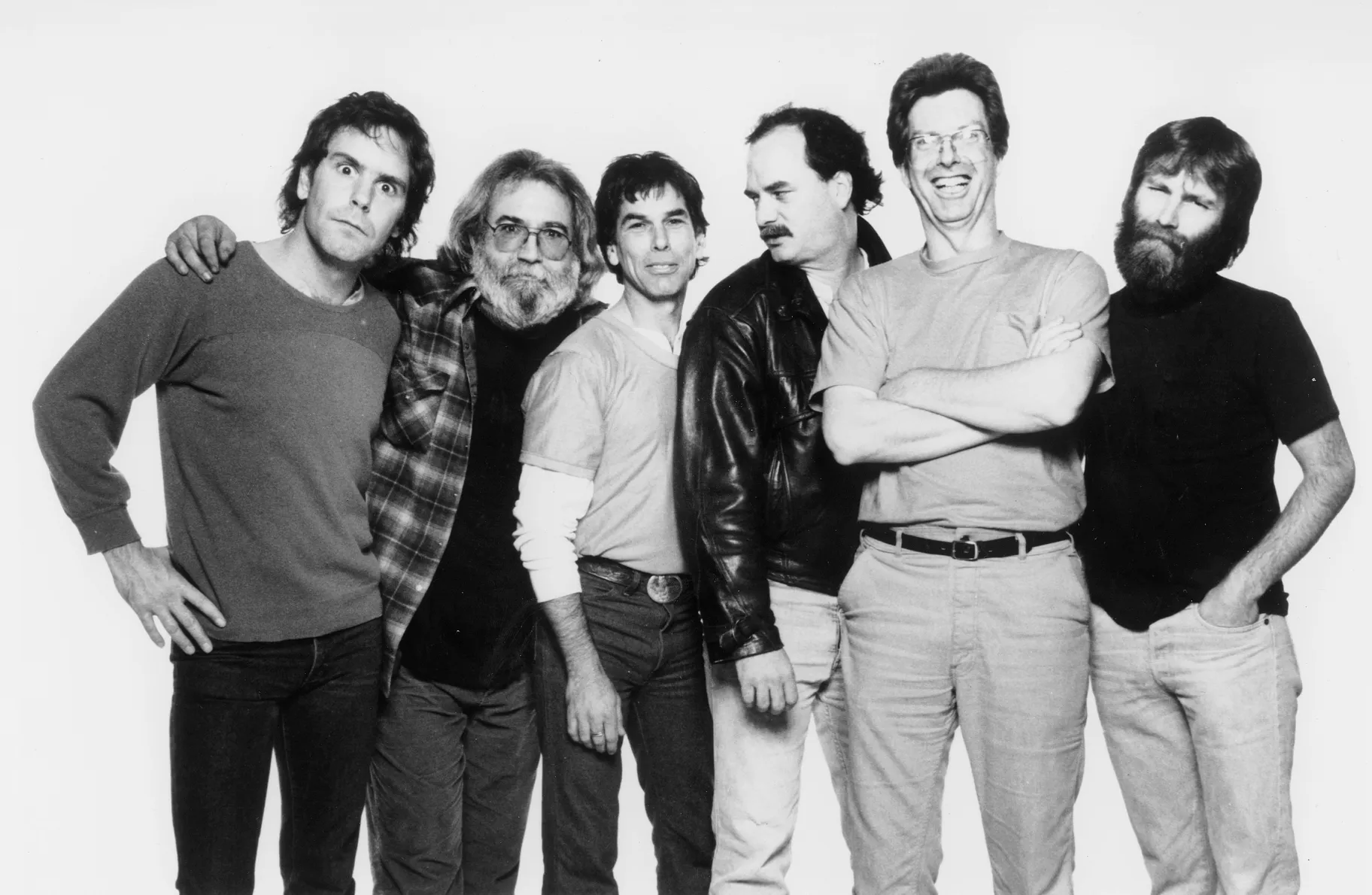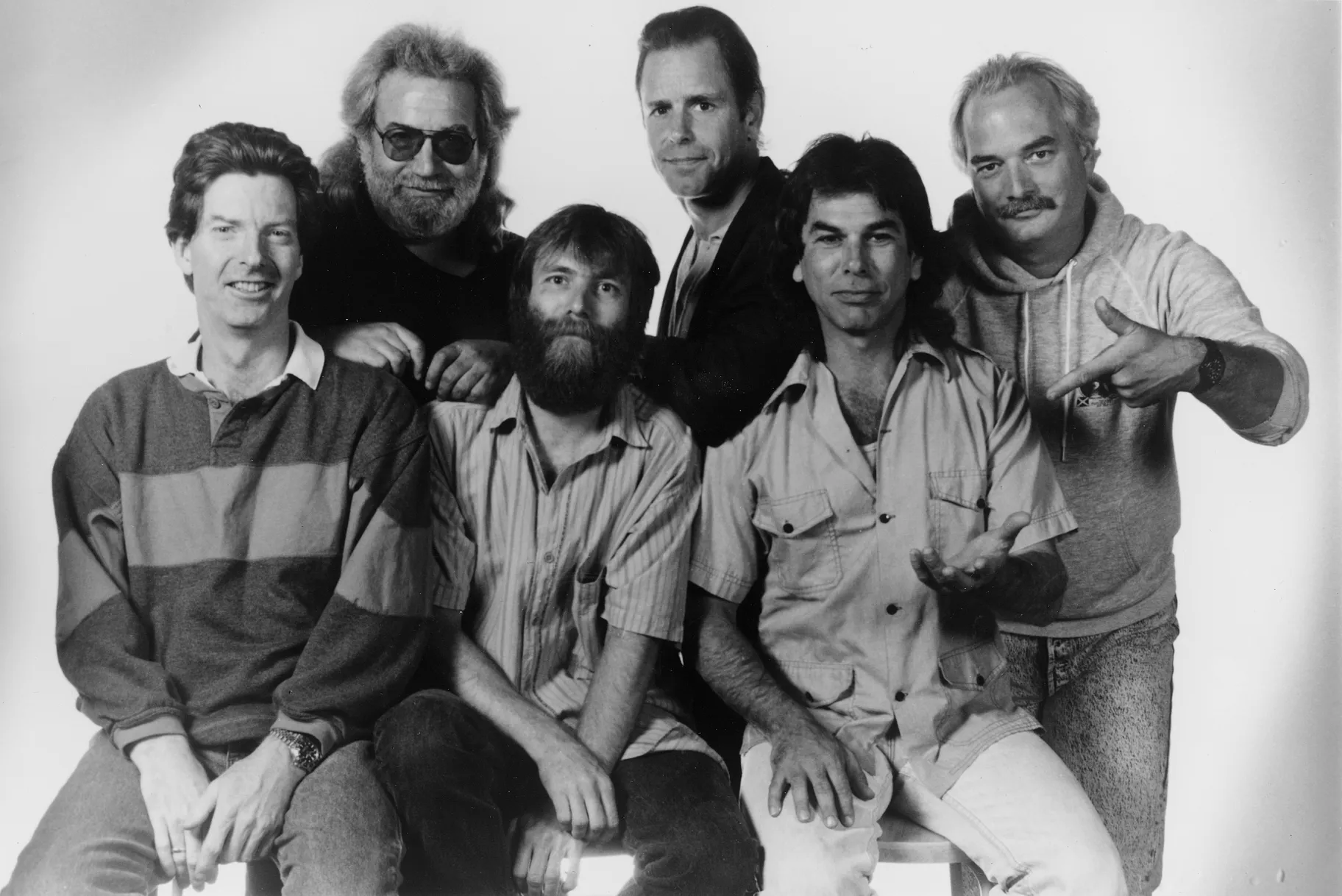The Grateful Dead recently broke the record for most top 40 albums on the Billboard charts, beating Elvis Presley and Frank Sinatra. The original band broke up with the death of frontman Jerry Garcia nearly 30 years ago, but the live albums keep on coming. The band’s most recent album, Dave’s Picks Vol. 49, came out in February.
David Lemieux is the Dead’s official archivist and the man behind all 49 volumes of Dave’s Picks.
“The Grateful Dead played 2300 concerts from about 1964 to 1995 with the original lineup, and the majority of them were recorded in very good quality,” Lemieux tells KCRW. The latest album is pulled from recordings of two 1985 shows at Stanford University’s Frost Amphitheatre.
Lemieux says he’s surprised by the band’s record-breaking feat, but says it's evidence of the band’s lasting resonance with fans. He started catching Dead shows at the end of their touring career — during the late 1980s and into the 90s — and encountered everyone from teenagers to older folks who had followed the band from their earliest days.
“We've got my generation of fans. And now if you go see Dead & Company, the band with Bobby [Weir] and Mickey [Hart] and John Mayer and Billy [Kreutzmann], … fans are pretty much all ages,” Lemieux says.

Members of the Grateful Dead pose for a photo in 1988. Credit: Herb Greene.
He adds, “Deadheads are … very loyal. … They can't get enough. … I think they'll keep picking [the albums] up because Deadheads love it. … The quality is spectacular. You're not going to hear The Grateful Dead’s music sound this good in any other way.”
He attributes the quality of these live albums to Jeffrey Norman, who’s been the band’s mastering engineer for more than three decades, and the original sound crews who created separate mixes for the recordings from what the audience was hearing live.
“The sound mix of the Grateful Dead was always known as the very best in the concert business, and that translated to tape,” Lemieux explains. “In the case of a lot of Grateful Dead tapes, they were actually mixed by an engineer who worked for the band…You had a sound engineer who was making the … arena sound really good through the PA system. But you also had a recording engineer mixing it specifically for the listening experience.”
Lemieux says that at the time, shows were recorded so the band could listen back to and critique their performances.
“The Grateful Dead, in their 30 years, they constantly grew. And every year, every tour sounded very different. And it's because the Grateful Dead didn't just sit on their laurels and play the same set for 30 years. They played dramatically different shows every night, but within years and tours and decades, it was so different, and yet the essence of it is still very, very much Grateful Dead music.”
The Dead’s improvisational style came to be known as “jamming.” Lemieux says they were heavily influenced by jazz, which also involves lots of improvisation, and began their career playing bluegrass on acoustic guitars, washboard basses, and banjos.
When the band emerged on the music scene in the mid-1960s, they were part of the Acid Tests, which were parties in the Bay Area where attendees took LSD.
“The Grateful Dead started out with zero pressure to entertain. They could go to these Acid Tests. They would get high, and they could play or not — it didn't matter. … Nobody had any expectations of them, and within that, gave them the ability to play improvised music, to play essentially whatever they wanted. So they didn't have the pressure to play three-minute rock and roll songs because that's what was the popular thing at the time. … They could just take a break for an hour or two — because people weren’t paying to go see the Grateful Dead, people are going to the Acid Test to have fun.”
Authenticity and spontaneity were core to the group’s popularity and long-standing dedication from fans, Lemieux says. He points to the variety of their live shows.
“You'd go for four straight concerts, and every night would have 20 to 22 songs played. During those four nights, not one single song was repeated. They go on stage every single night without a setlist, and they would come on stage, and the six of them would talk amongst themselves, ‘What would you want to open with?’ And you could see them having these conversations, and then they would play a song or two, and then they'd get in a little huddle and say, ‘What do you want to do next?’”
He adds, “It was just that sense of adventure and every night was the time of your life. The number of times I walked out hugging complete strangers [who were] just mystified by what we've just seen, it happened a lot. There's not a lot of music that does that.”
Plus, he says Deadheads welcome all. “As long as you're not hurting someone else, you're accepted. And as long as you're not bringing bad vibes to the scene …. you're welcome to do what you want. It's your personal space, your personal world. … I've got short hair and I’m sober and I look around at Dead & Company shows, and I'm getting off on that music as much as anyone else there.”

Members of the Grateful Dead pose for a photo in 1989. Credit: Ken Friedman.
And that music keeps on coming. Deadheads can rejoice as Dave’s Picks Vol. 50 is on the way. Lemieux says it’s slated for a May 1 release and will include the band’s May 3, 1977 concert in New York City.
“When you've got a series that Deadheads seem to love, as long as we keep putting out good quality music that sounds good, packaged well, I don't see it slowing down anytime soon. I mean, we love what we do. Deadheads seem to love what we're doing.”
He adds, “Next year, 2025, is the Grateful Dead 60th anniversary, so [there] seems to be no end in sight. The popularity, it certainly isn't dipping. It certainly isn't even plateauing. I think it just keeps growing.”
